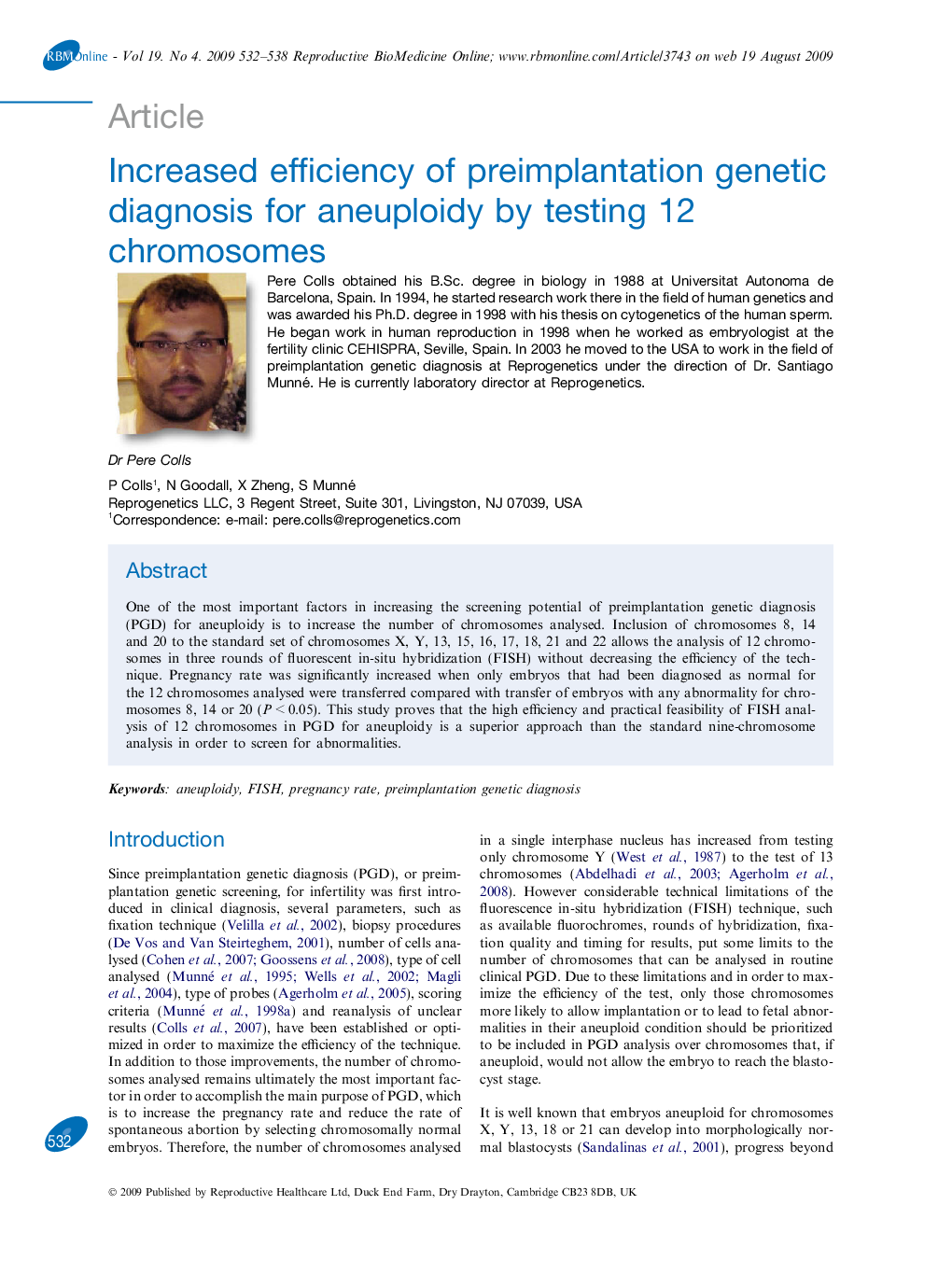| Article ID | Journal | Published Year | Pages | File Type |
|---|---|---|---|---|
| 3972178 | Reproductive BioMedicine Online | 2009 | 7 Pages |
Abstract
One of the most important factors in increasing the screening potential of preimplantation genetic diagnosis (PGD) for aneuploidy is to increase the number of chromosomes analysed. Inclusion of chromosomes 8, 14 and 20 to the standard set of chromosomes X, Y, 13, 15, 16, 17, 18, 21 and 22 allows the analysis of 12 chromosomes in three rounds of fluorescent in-situ hybridization (FISH) without decreasing the efficiency of the technique. Pregnancy rate was significantly increased when only embryos that had been diagnosed as normal for the 12 chromosomes analysed were transferred compared with transfer of embryos with any abnormality for chromosomes 8, 14 or 20 (PÂ <Â 0.05). This study proves that the high efficiency and practical feasibility of FISH analysis of 12 chromosomes in PGD for aneuploidy is a superior approach than the standard nine-chromosome analysis in order to screen for abnormalities.
Related Topics
Health Sciences
Medicine and Dentistry
Obstetrics, Gynecology and Women's Health
Authors
P Colls, N Goodall, X Zheng, S Munné,
